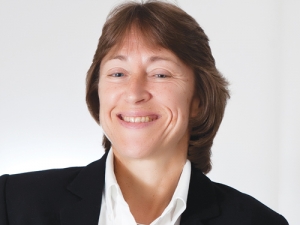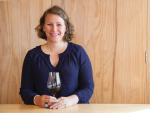She worked for many years as a book editor specialising in languages and linguistics before applying her keen brain and fine palate to wine. After five years with Waitrose, in 2005 she became full-time writer, researcher, co-ordinator and associate palate for internationally acclaimed wine writer Jancis Robinson.
She played a major part in the most recent editions of The Oxford Companion to Wine (2006, 2015), and The World Atlas of Wine. She researched and co-authored, with Jancis and with Dr José Vouillamoz, Wine Grapes: a complete guide to 1,368 varieties including their origins and flavours.
Julia contributes to and maintains the editorial standards of the award-winning www.JancisRobinson.com.
Despite its international popularity with consumers, this is only the 2nd International Sauvignon Blanc celebration, (the first being in Austria a few years back). Why do you think it has taken so long for an event like this to gain traction?
Perhaps because there are few countries where Sauvignon Blanc plays such a lead role as it does in New Zealand, perhaps because its reputation has been based more on good wine than great wine, perhaps because it is seen as a less 'complex' variety without the potential longevity of, for example, Cabernet Sauvignon, Pinot Noir, Chenin Blanc or Chardonnay.
In your experience, where does Sauvignon Blanc sit in the world of wine?
I would say that in the UK market, and perhaps more generally, it sits at the upper end of everyday drinking wine – a wine whose popularity is due mainly to reliability and recognisable/consistent styles and flavours. More enjoyable than aspirational but also potentially boring.
Where is the variety going?
You ask where it is going – I am hoping to learn more about this during the event. My answer is more to do with where I think it needs to go. I think it needs to diversify further in terms of styles. There are already good examples of blends (eg with a little Sémillon), wines that show definite lees influence and perhaps slight oak influence, wines that try to express region or subregion as much as variety, wines with more diverse winemaking influences (eg fermented with ambient yeast). I think there is a danger of boredom if this diversification does not take place. Personally I would like to see fewer wines that rely on residual sugar to achieve balance with high acidity (in some instances because yields were too high).
What are you hoping to learn/discover from the upcoming event?
I'd like to discover a broader range of styles and to find out where New Zealand producers are trying to go with their wines in terms of diversification and greater complexity/sophistication. I'm also hoping to learn more about the specific influence of viticultural practices on Sauvignon Blanc and taste a wide range of wines from around the world to compare and contrast with New Zealand Sauvignon Blanc. ν














